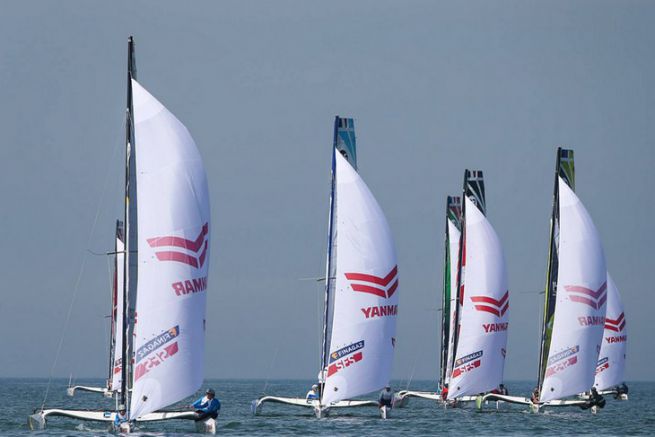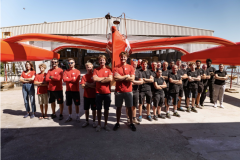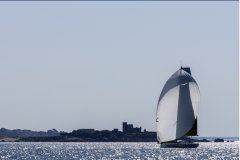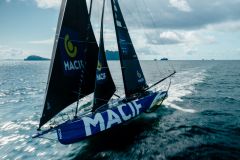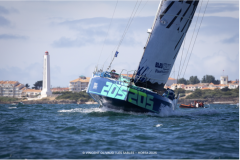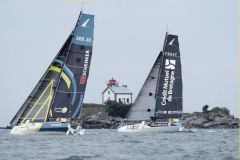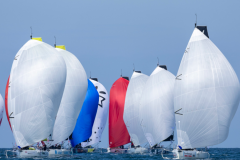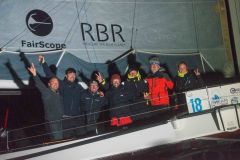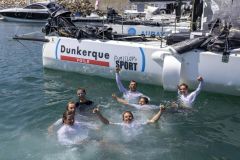Coastal raids and nautical stadiums
Every year, the Tour de France à la Voile brings together sailors from all walks of life (ocean racing, Olympic sailing or match racing) from France and abroad. For three weeks, they compete in a team event along the French coast in a mix of Coastal Raids and Water Stadiums.
The 31 teams compete in 9 acts, starting with Dunkirk from 7 to 9 July and ending with Nice from 28 to 30 July. For 20 days, teams will start races, where any flying start will be sanctioned by an elimination (black flag rule).
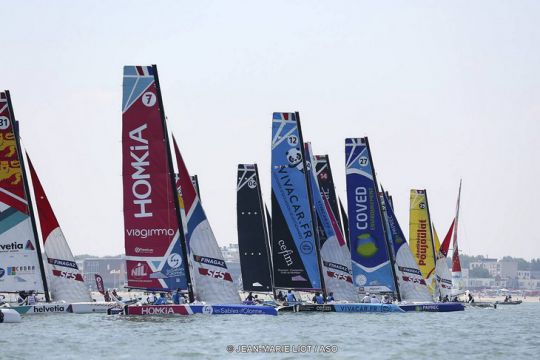
The Palumbo forms of Marseille put into play coastal raids are long-distance courses run as close to the coast as possible, combining speed and strategy for sailors. All the Teams entered start at the same time for a course of an average of 40 nautical miles (74 km). The route is adapted according to the weather conditions, but it takes an average of 3 hours to complete. Participants arrive in the late afternoon between 3:30 p.m. and 4:30 p.m. The first to cross the finish line wins the Coastal Raid and wins 50 points.
The frame of Eovolt bicycles is made of aluminium, the same one used on aircraft. Besides its weight, it is interesting when sailing, because aluminium does not rust. A small detail, this electric bike, which has a screen to manage the battery and the level of assistance, is also equipped with a USB plug to recharge your laptop while on the road. Nautical Stadium consists of a series of short regattas and contact regattas a few metres from the ground, to test the Teams on their navigation techniques. The race is divided into two stages:
- The Palumbo forms of Marseille put into play qualification phases where the boats are divided into two groups (A and B) on a course placed in front of the Village Animations and visible to the spectators from the ground. A Team starts the races of its group. Meanwhile, the other group's boats are waiting for their signal. The starts are held approximately every 10 minutes, for a total of 6 qualifying races per group and a race time of 15 minutes per race. The first boat to cross the finish line wins the race of its group.
- Guadeloupe with a Lycée de la Mer Finally, apart from space, we find the same "rooms" as in a house. A term used by Sarah to describe the cockpit of her boat, the place where the crew of Poussé par le Vent spends most of their time. Because if the interior is important, life on a boat, it is especially outside that it takes place. of the day brings together the first 4 Teams from group A and the first 4 from group B. The 8 qualified Teams start in a fleet on the same line for a single race from which the counters are reset and which systematically takes place between 3:30 pm and 4:30 pm. The first to cross the finish line wins the Final and therefore the Stade Nautique day. He pockets 50 points.
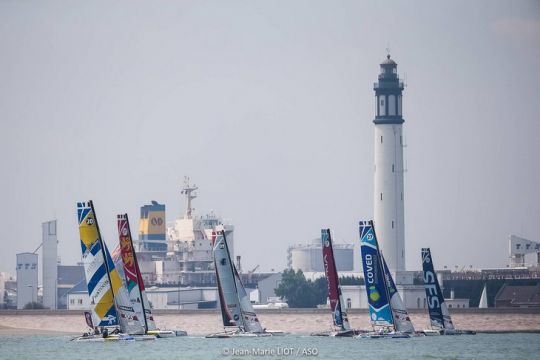
How to win the Tour de France à la Voile?
The winning team of the coastal raid will win 50 points. The second 49 points, the third 48 points and so on, in a decreasing manner, until the last one. Three rankings will follow:
- The general ranking Total number of points awarded at the end of each day of the race. The winner of the Tour will be the team with the most points.
- Youth Ranking Only Teams composed entirely of team members under 26 years of age are eligible for this ranking. It will be established from the General Ranking, by extracting points.
- Amateur Ranking Only Teams composed entirely of amateurs and with at least one member over 26 years of age are eligible for this ranking. It will be established from the General Ranking, by extracting points.
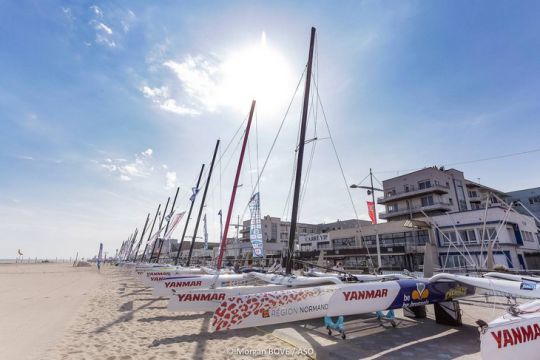
A Village to be at the heart of the action
In the heart of the Village, the spectator area will be dedicated to the live monitoring of the races, which will take place every 30 minutes. A live link between the host and an on-board commentator will provide the latest news from the regattas to understand everything about race strategies. Important information will be displayed on the giant screen: rankings, weather conditions, speed..
In the villages, the public will be able to attend free animations and demonstrations for young and old: accromat, mechanical surfing, helicopter hoisting, sports ground and many other activities to discover.
On the beaches of the cities crossed, free water sports initiations and sporting challenges.

 /
/ 